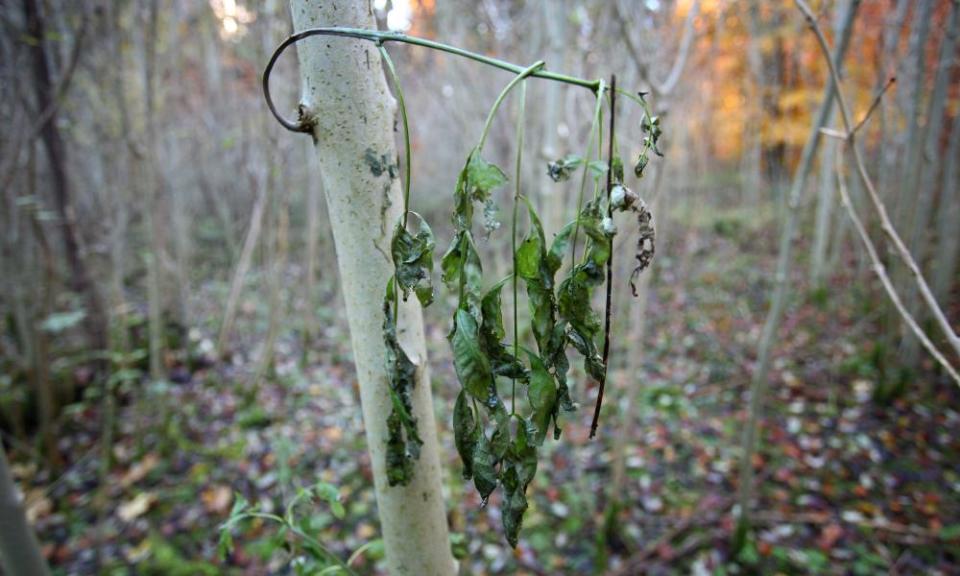Country diary: ash dieback has begun to bite in this wood too

The path into the old donkey field is just about passable. A scratchy wriggle through a blackthorn thicket encroaching from the hedge leads to a crouching hollow-way between hawthorn, hazel and briar. What remains of the pasture are little blue dots of birds-eye speedwell and ground ivy, tiny treasures that survive from the wildflowers of a field that was last grazed about 20 years ago. Its name is unrecorded, but it was once pasture for heavy horses working in the quarries and lime kilns, and for the donkeys that had been central to the local community for generations. Since then, the field has become a scratch wood – hastily assembled saplings from surrounding ash trees, a scrabble of hips and haws, and hazels grown from forgotten squirrel caches. The thorny scrub that eventually covered the whole acre has now grown taller and is beginning to open in places.
From the amount of fresh droppings, the deer not only move through this patch but also use it for laying up; there are very few people passing close by to bother them – this is the first time I’ve got into this place for a couple of years. The path threads into a wood that is at a later stage of natural regeneration than the field and was also grazed after quarrying stopped a century ago. The ash trees are more mature and sway like masts in the breeze; many have dead branches and patchy foliage; some are totally leafless.
I have been dreading it, but I suppose it was inevitable that ash dieback would begin to bite into places like this. How many ash trees will survive? What trees will replace them? On a limestone ridge that is principally ash woodland now that elm has gone, how will the disease affect the 20 miles of Wenlock Edge? Damned if I know.
Looking from the gate of this wood over the green of May towards the far Berwyn mountains, our catastrophes feel part of another kind of natural regeneration. Our traumas and entitlements may be met with nature’s crushing indifference, yet I still feel something of Andrew Marvell’s joy: “Thrice happy he, who not mistook, / Hath read in Nature’s mystick Book.”

